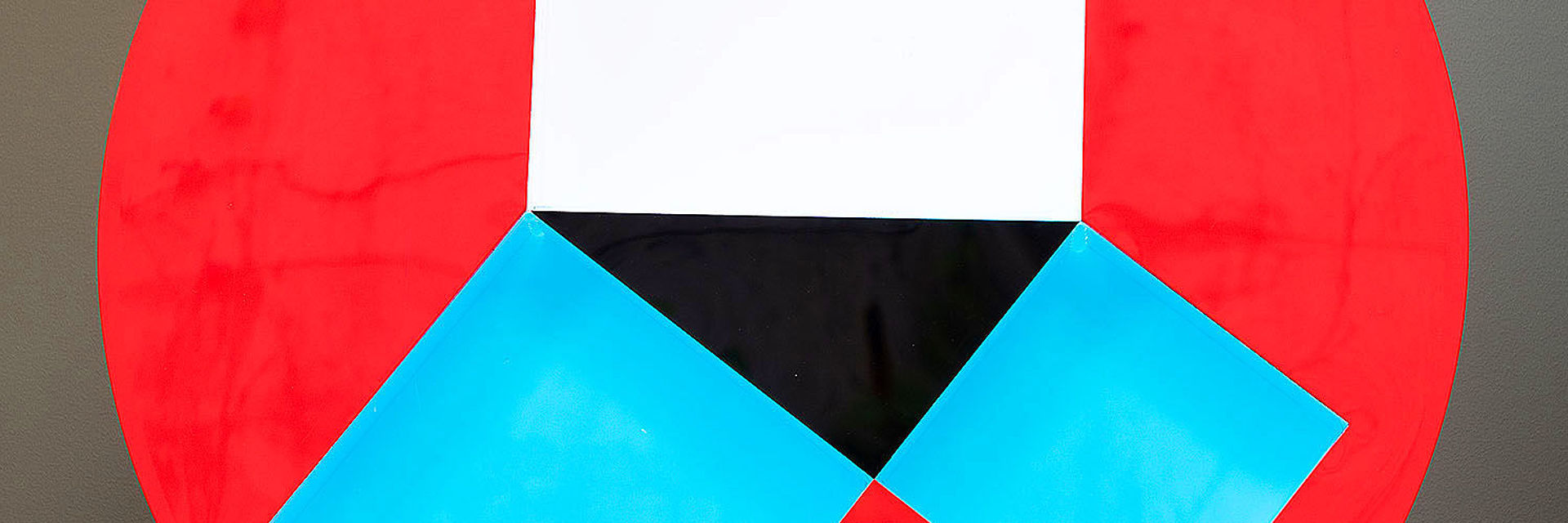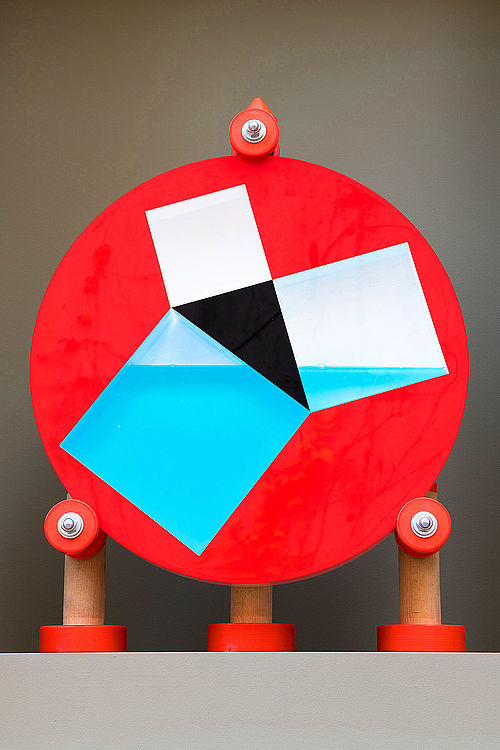
Pythagorean Theorem
Object of the month October 2019

SDTB / C. Kirchner
For many people, the equation a² + b² = c², which is also known as the Pythagorean Theorem, brings back memories of geometry classes. This experiment provides a way for people to vividly conceptualize this formula.
There is a right-angled triangle in the middle of a figure. Each of its sides – a, b, and c – is the base for a square extending outwards. There are, then, three squares adjoining the triangle. The area behind the two smaller squares a² and b² is filled with a blue liquid. If the triangle is rotated, the liquid from those squares flows into the large square c² and fills it up exactly. The total area of the two small squares together is thus the same size as the area of the large square: a² + b² = c².
Using those liquid volumes to draw conclusions about two-dimensional areas is valid because the small empty space beneath all the squares has exactly the same depth.
Experimental stations, also called “hands-on” stations, have been part of the Deutsches Technikmuseum since its opening in 1983. The “experimental field” with 40 different stations opened simultaneously with the museum and immediately enjoyed great popularity. More and more hands-on experiments were added until in 1990 the stations were finally moved into their own building next to the museum to become the current Science Center Spectrum.
This is a place where experimenting and trying out on about 150 hands-on experiments is still explicitly encouraged! The experiments allow visitors to interactively and playfully experience the fundamentals of science and technology. The practical application of these principles can be found in many of the exhibits in the Deutsches Technikmuseum.
